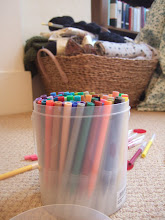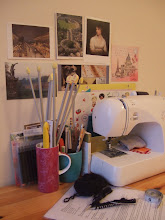 I didn't make any modifications to the pattern, which is really easy to follow. They're a comfortable fit, even with all the seams inside each finger and along the outer edge, in fact the seams aren't that noticeable. The yarn is soft enough for gloves, and has so far been quite hard-wearing.
I didn't make any modifications to the pattern, which is really easy to follow. They're a comfortable fit, even with all the seams inside each finger and along the outer edge, in fact the seams aren't that noticeable. The yarn is soft enough for gloves, and has so far been quite hard-wearing.
If you're curious, the bay in the background is the beautiful Lantic Bay on the Cornish coast.

And if you're travelling that way, you absolutely must have lunch at the retro, beachy Pinky Murphys, it does delicious home-made food, check out those cakes!























